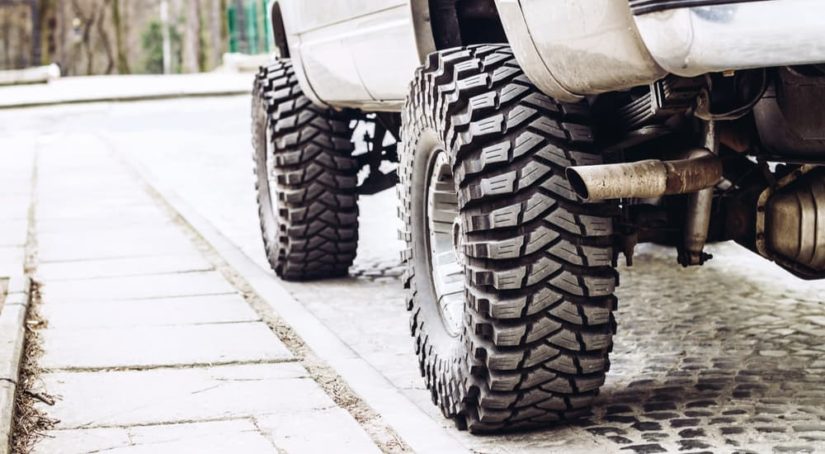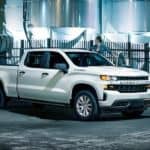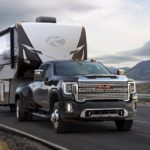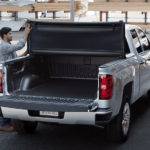Do you like the tall ride height and improved ground clearance of a truck or SUV? These features are behind the surging popularity of larger vehicles, but what if you could have even more? A lifted truck or SUV can boost you even higher above the surrounding traffic, take on rougher terrain, and generally stand out in a crowd. However, buying a lifted vehicle can be more difficult than buying your run-of-the-mill car, truck, or SUV. While some manufacturers offer lifted versions of certain models straight from the factory, the vast majority of lifted vehicles are the product of an aftermarket lift kit. This can be intimidating to buyers because not all lift kits are created equal, and even the best lift kit can be installed incorrectly.
While there is always the potential that a lifted truck or SUV you are eyeing has hidden problems, the good news is that there are some things to watch for. While it is always a good idea to have any used car checked out by a trusted mechanic before buying, here are some good ways to narrow down your options and help you find a quality lifted vehicle. It may take a bit more effort to locate a lifted truck or SUV, but the payoff is also greater than buying the sort of vehicle that you can see everyone else on the road driving.
Not All Lifts Are the Same
This point deserves repeating––there is a huge number of different types of lift kits out there, made by a wide variety of manufacturers and installed by everyone from certified service technicians to DIY enthusiasts. Going through even a fraction of the possible combinations is quite simply impossible, so you will have to do your own research on the lifted truck that you are interested in buying. Usually the coilovers, shocks, springs, or other components of a lift kit will be marked with the manufacturer’s name, and there is no replacement for actually crawling under the vehicle and checking them for yourself (pro tip – always bring a flashlight when examining a used car). Never simply take the seller’s word for it––you would be surprised how many sellers don’t actually know all the details of the vehicle they are selling.
Once you know the details of the lift kit used, do some research on it. Look for online forums dedicated to the vehicle you are interested in (most models have their own online communities––especially popular models like the F-150, Silverado, or Wrangler), and see what other drivers have to say. If you can’t find details on the specific lift kit and model, look up the manufacturer. If a brand has a good reputation, you’re probably good to go. If you can’t find any information on the brand, then it is probably best to steer clear. The very best kits are those that were offered as factory-approved modifications, but only some brands offer these.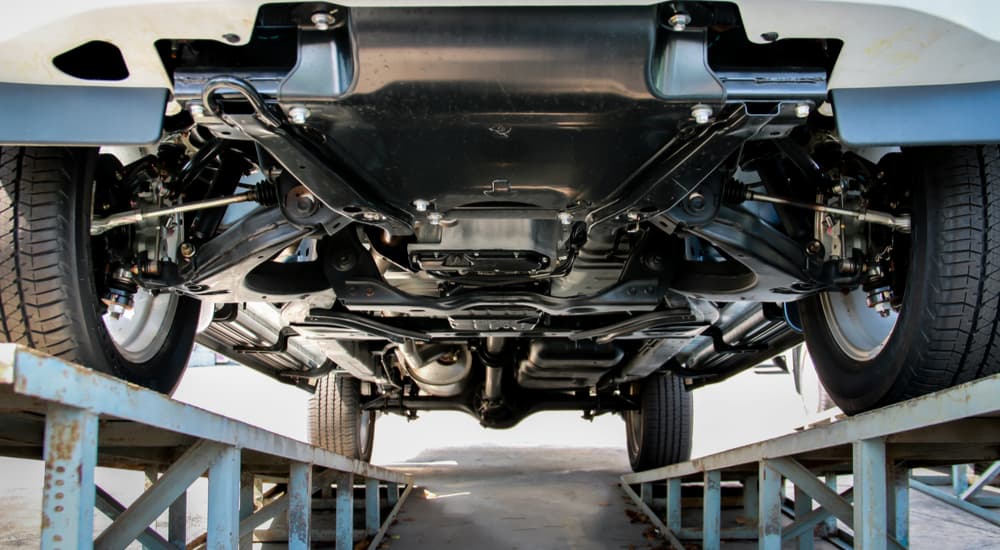
Inspect the Truck
For the most part, inspecting a lifted truck before you buy is the same as any other vehicle. You want to make sure that everything is working properly, that there is no damage to the vehicle, and that you can’t find any excessive corrosion. If you know the basics of what to look for when buying a car, then you are already pretty much set. However, there are a few points you will want to pay special attention to when it comes to lifted vehicles.
The biggest drawback to a lift kit is that it changes the factory suspension geometry. A vehicle’s suspension is a complex system with a lot of moving parts that work together to keep the tires optimally positioned against the ground. A properly designed lift kit takes a lot of different factors into account to keep the tires as close as possible to their factory alignment––a cheaper lift kit? Not so much. While you may not be able to tell the difference when the truck is parked at the dealership lot, you will feel the difference once you start to drive it.
Before taking a lifted truck out for a test drive, always check the tires for signs of unusual wear. This is a key indicator that something is off with the alignment and can manifest itself in a few different ways. The signs can be obvious or fairly subtle but look for parts of the tire that are more worn than others. Of course, this isn’t a huge help if the vehicle has a set of new tires, but it’s easy to check and a great place to start.
While you are checking the tires, make sure they aren’t rubbing against any part of the truck’s suspension or body. One of the main reasons to install a lift kit is to be able to fit larger tires to your truck or SUV, but some drivers still go a little too big. Make sure to turn the steering wheel to full lock in both directions while checking, and be aware that some tire fitment issues are only noticeable when the truck is loaded down or actively driving.
Going For a Test Drive
If you have never driven a lifted truck or SUV before, then make sure you go for a long test drive before buying. A lifted vehicle simply handles differently from an unmodified vehicle, and you need to make sure that you understand its quirks before you commit to buying it. First, simply make sure that you are comfortable climbing into the cab and accessing the bed or tailgate. If this is going to be your daily driver or work truck, don’t make the mistake of buying something that is too tall for comfort. Many experienced drivers prefer a relatively small lift kit for the sake of practicality.
Next, get a feel for the acceleration, braking, and handling, just as you would with any other car. This is particularly true if the lifted truck includes very large wheels, as the added weight and size can result in sluggish acceleration and sloppy handling. If the truck has all-terrain or mud-terrain tires, the effect will be even larger. One quirk of changing wheel size is that it will throw off the speedometer and odometer. For instance, going from a 31-inch wheel to a 35-inch wheel will mean your actual speed is 13% higher than the speedometer is reporting, so keep that in mind if you want to avoid unexpected speeding tickets.
During the test drive, be sure to turn the radio off, listen for odd noises, and feel for harsh vibrations. If the truck starts making sounds when it hits bumps or turns corners, it may be a sign that the suspension components are wearing out. Vibration is usually a sign of a bad alignment and is more likely to manifest itself at higher speeds, so make sure to take the lifted truck out on the highway or interstate if you can. Even the best lift kits will put additional stress on the suspension, particularly if the truck or SUV was used for serious off-roading, and the fixes can sometimes be relatively simple, so don’t count out a lifted truck for a few odd noises. However, make sure you get to the bottom of any issues before buying.
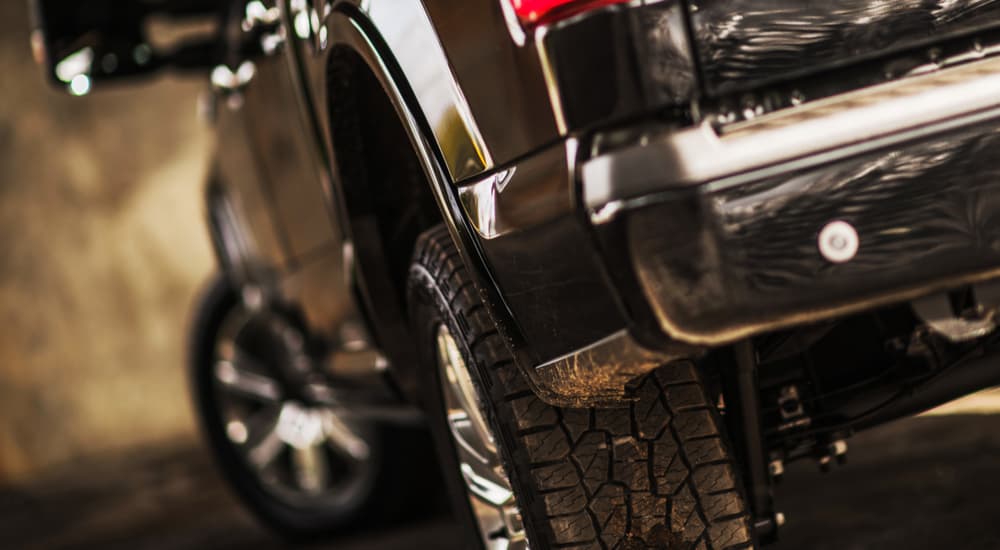
Enjoy Your Truck
Buying a lifted truck or SUV may seem like a risk, but nothing compares to driving a truck that is one of a kind and better than the rest. Ultimately, a lift kit is a fairly simple modification, especially if you find a truck with a factory-approved kit, so don’t feel too stressed out while you are shopping. Once you are out on the road, towering over all the other cars and trucks around you, you will forget the time and effort it took to make sure you found a quality lifted truck. Of course, if you are willing to pay a bit more to skip the hassle, you can always buy a stock truck and have your ideal lift kit installed by a mechanic you can trust. No matter which route you choose, a lifted truck or SUV is sure to spice up your daily drive.
